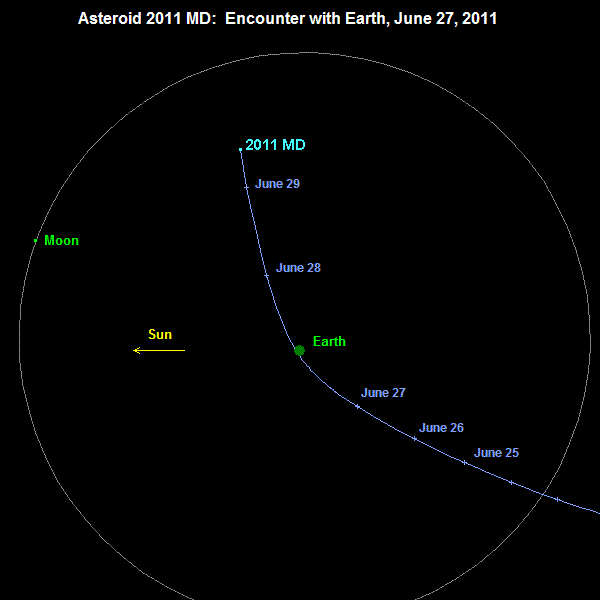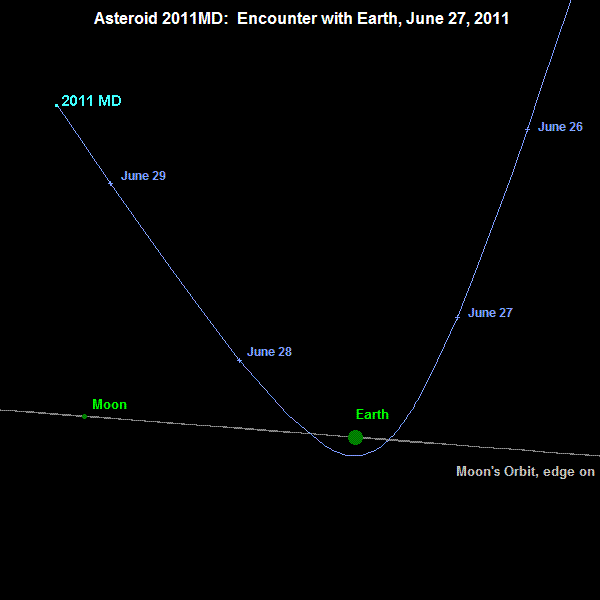As spotted by SpaceWeather. At about 1700 UT (6pm BST) today Asteroid 2011MD will fly past only 12,300 kilometers (7,600 miles) above the Earth’s surface. [Image credit NASA/JPL]
As the diagram shows, that’s close enough to be affected by Earth’s gravity.
This small asteroid, only 5-20 meters in diameter, is in a very Earth-like orbit about the Sun, but an orbital analysis indicates there is no chance it will actually strike Earth on Monday. The incoming trajectory leg passes several thousand kilometers outside the geosynchronous ring of satellites and the outgoing leg passes well inside the ring. One would expect an object of this size to come this close to Earth about every 6 years on average.
And, via the Professor, a Sky & Telescope report has some observing tips, and notes
The asteroid was spotted on June 22nd by LINEAR, the Lincoln Near-Earth Research project. Its discovery was announced on Thursday morning by the Minor Planet Center.
The asteroid’s orbit is uncannily similar to Earth’s orbit. But there’s no chance that the asteroid will hit Earth on this approach, and almost no risk at its next close approach, in 2022. If the asteroid did strike, it would probably explode in the upper atmosphere — a fine spectacle, but harmless.
So, probably, no chance of a new spectacular impact crater. This time…
As the Sky & Telescope report adds
This is not the closest known asteroid approach; in fact, a smaller asteroid actually struck Earth in 2008. In addition, three other asteroids have come closer than 0.00012 astronomical units (11,000 miles) from Earth’s center, the estimated distance of 2011 MD at its closest.
However, this is probably the biggest known asteroid to have come this close. Note the phrase “known asteroid.” No doubt many asteroids much bigger than this one made close approaches without being detected before the near-Earth-object (NEO) surveys ramped up in the 1990s. According to asteroid specialists at NASA’s Jet Propulsion Laboratory, an asteroid of this size should pass this close to Earth every six years on average.
And here’s another image showing just how close that is – “The asteroid’s orbit is actually highly inclined; here it’s been projected into the plane of Moon’s orbit.” [Image credit: NASA/JPL]
Meanwhile, Nasa’s Dawn spacecraft continues to close in on Vesta and the start of year-long stay at that giant asteroid. If I can’t embed the video you can find it here. [Image credit: NASA/JPL-Caltech/UCLA/MPS/DLR/PSI and NASA/ESA/STScI/UMd].
Discover more from Slugger O'Toole
Subscribe to get the latest posts to your email.


